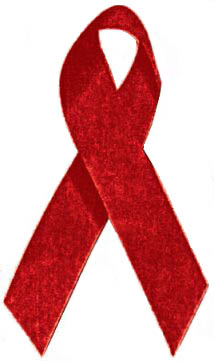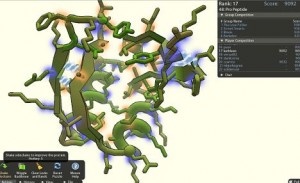Promising Leads in the Hunt for an AIDS Cure
30 years after the first reported cases of AIDS we still do not have a cure for a disease that has killed 25 million people.

Source: Wikipedia
The World Health Organization currently estimates at least 33 million people are currently infected worldwide and approximately 2 million deaths are attributed to the disease each year. While in most western countries the impact of HIV is limited due to the use of Antiretroviral drugs with HIV+ patients sometimes having life expectancies close to the average uninfected individual. However in less affluent countries AIDS is a serious problem.
Now to explain how HIV/AIDS infects an individual and how the current treatments work. The HIV virus replicates in the human body by inserting it’s genetic code into human cells, most commonly a type called CD4 cells, which then produce a large amount of HIV particles before dying soon afterwards. Antiretroviral drugs interfere with this replication process of the HIV virus in the human body and reduce the amount of HIV to extremely low levels (so low that sometimes the presence of HIV can’t even be detected by a standard test). However a problem lies with ‘resting’ CD4 cells that can lie dormant for years and keep HIV’s genetic material in the body. Then when the patient stops receiving the treatment the “HIV can re-establish itself by leaking out of these “viral resevoirs”” (avert.org). So there is 2 potential paths for HIV cures:
- A Sterilising Cure – A cure that would remove all infected cells.
- A Functional Cure – A cure that will keep the virus dormant and prevent it from replicating after the discontinuation of antiretroviral drug treatment. (Further reading on potential functional cure)
AIDS related discoveries have been in the news regularly in recent months. The first of these stories was published in the journal Nature Structural and Molecular Biology and acknowledged an unprecented number of people as helping to make the discovery. Scientists had been trying to work out the structure of “M-PMV retroviral protease – an enzyme that plays a key role in the development of a virus similar to HIV” (http://www.bbc.co.uk/news/technology-14986013), for over a decade without success. Amazingly when the protein was given to players of an online game called Foldit it only took 10 days for the 57,000 players (that were acknowledged in the paper) to work out the lowest energy configuration of the protein. “This result could be an important step forwards in the development of anti-Aids drugs”. MSNBC Video on Foldit Discovery
Another recent lead in the hunt for a cure is the discovery that removing cholesterol from the membrane of HIV can stop it from damaging the immune system. Cholesterol is necessary to keep the outer membrane fluid and the virus picks it up from the first immune cells it infects. When the cholesterol is removed, HIV can no longer communicate and disrupt the immune system. These findings were published in journal Blood and scientists are now working on seeing if they can turn the inactivated virus (that no longer contains cholesterol) into a vaccine. (Further reading on cholesterol discovery)
A third paper published recently in the journals Vaccine and Journal of Virology by researchers in Spain details a new vaccine called MVA-B that has demonstrated promising results. The vaccine is “made with bits of non-infectious HIV genetic material and is designed to train the body’s immune system over time to detect and fight different components of the virus”. The vaccine has been tested on healthy volunteers (without HIV infection) and achieved an immunological response against HIV in 92% with 85% of them maintaining immunity for 12 months. The next stage is to test the vaccine on HIV positive individuals and if these trials go well “the scientists believe they may well have found a vaccine that could turn HIV into a minor chronic infection, similar to Herpes” and would therefore only be a problem for people with compromised immune systems. (Articles for further reading on MVA-B vaccine here and here)
With these recent discoveries this elusive cure may not be far away and it is exciting to think that we may live to see major diseases cured in the very near future.

October 20th, 2011 at 7:14 pm
I like how you continue on your topic! This is really a delightful news and I am also hoping to see that we can actually cure AIDS not too far in the future. I think it is always a concern that once we find out the way to cure one, there are always new viruses, or new things that we have to work on again.. it’s on-going and seems like never-ending processes:(. But it is definately good to hear that we may cure major diseases (known so far) and will continue to cure diseases eventhough there may be ‘superviruses’.
October 21st, 2011 at 2:16 pm
Your post makes me hopeful that a cure is just around the corner! But really, it is about time. 25 million people is way too many especially when the disease involves such a long death. Most of all, I find the vaccine very promising. Those are some great preliminary results.
October 21st, 2011 at 8:37 pm
I’m really excited to see an example of “citizen science” on the course blog. Not only is Foldit a fun game, users learn something about chemical structures along the way — and probably gain some appreciation for the complexity of scientific research. It’s communicating science in a completely new way. Well, not entirely new. SETI (search for extraterrestrial intelligence) was an early example of citizen science that used idle personal computers to create a giant network of computing power that monitored space for signs of intelligence.